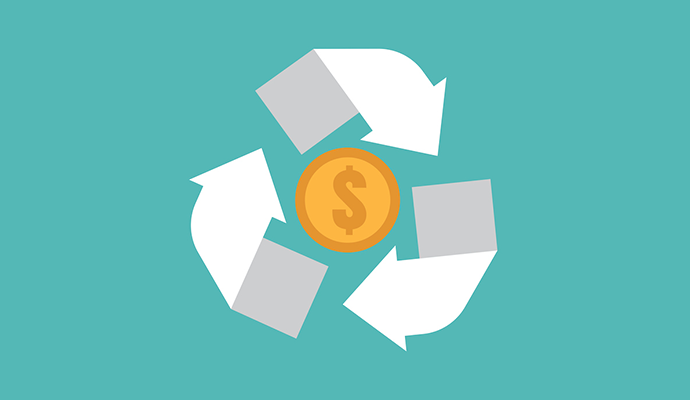Most of Premium Dollar Used for Prescription Drugs, Medical Services
Inpatient and outpatient hospital costs combined accounted for 38.9 cents of the healthcare premium dollar, while 22.2 cents went toward prescription drugs.

Source: Getty Images
- Almost 83 cents of the average healthcare premium dollar goes towards prescription drugs and medical services, including inpatient and outpatient costs, emergency room costs, and doctor visits, according to research from AHIP.
AHIP analyzed data from commercial health insurance plans between 2018 and 2020 to determine how payers spend member premiums. The research reflects spending by employer-sponsored health plans and health plans in the individual market.
“This 3-year trend data includes the first year of the COVID-19 pandemic, when healthcare utilization was down dramatically as patients deferred care and isolated due to the risk of infection,” Matt Eyles, president and chief executive officer of AHIP, said in a press release.
Despite the reduction in healthcare utilization in 2020, 82.4 cents of every healthcare dollar went toward prescription drugs and medical services between 2018 and 2020. In contrast, 81.6 cents of the premium dollar went toward these services between 2016 and 2018.
Prescription drugs accounted for the largest portion of the premium dollar at 22.2 cents—up from 21.5 cents between 2016 and 2018. Prescription drug expenses include payments for outpatient prescription medications obtained from the pharmacy or medicines administered in a physician’s office or clinic.
The next largest chunk of the healthcare dollar (19.9 cents) went toward outpatient hospital costs. This includes physician and facility payments for treatment in the outpatient department of hospitals, such as receiving an X-ray or seeing a primary care physician. However, it does not include emergency room costs, such as payments for emergency room visits and ambulance transportation, which accounted for 3.3 cents of the premium dollar.
Inpatient costs represented 19 cents of the dollar, AHIP found. These expenses include payments for all services during hospitalization, including payments to physicians, facility payments, costs for prescription drug administration, and room and board costs.
Almost 12 cents per dollar went toward doctor visits, which included payments to physicians for services provided in an office, clinic, or urgent care facility. The 11.8 cents also went toward equipment and supplies used during a visit and nursing staff salaries.
Other outpatient services, such as lab work, dialysis, care performed in ambulatory surgery centers, and at-home care, accounted for 6.2 cents of the healthcare dollar.
“If Americans are to experience lower premiums, we must improve competition among Big Pharma, hospitals and health care systems, and specialists. That is how we make coverage and care more affordable and accessible for everyone,” Eyles added.
The remaining 17.5 cents of the healthcare dollar went toward non-medical areas, including administrative expenses (4.2 cents), taxes and fees (3.8 cents), profit (3.6 cents), other fees and business expenses (3 cents), cost containment (2.1 cents), and quality improvement (0.8 cents).
Payers are required to spend at least 80 to 85 percent of premium dollars on healthcare claims and quality improvement efforts. If payers do not meet this threshold, they must issue medical loss ratio rebates.
The individual market saw a higher medical loss ratio in 2021, indicating that healthcare premiums may increase in 2023. Other factors are set to impact premium growth next year as well.
Preliminary data from the Kaiser Family Foundation (KFF) revealed that Affordable Care Act (ACA) marketplace premiums will grow by five to ten percent next year. Payers attributed this growth to rising healthcare prices and utilization.
Similarly, healthcare utilization rates and market inflation on healthcare prices will likely influence employer-sponsored health plan premiums in 2023.
